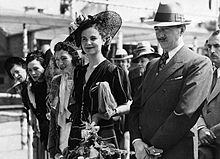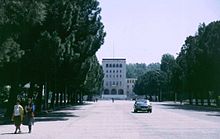The man's clothes were dirty and he was clearly exhausted. He slumped back in the plastic chair and began to cry.
"My wife, my family, they're all dead. All killed," he said. "That's why I left Syria."
I met Saba in a makeshift reception centre for refugees, in the town of Passau.
He had been waiting for hours to be "processed". Little wonder - 200 refugees arrive at this centre every day.
Across town, a municipal ice rink has been hastily converted into another reception centre.
Germany receives more refugees than any other European county.
In the first half of this year, 180,000 people claimed asylum in Germany, and that number is expected to more than double by the end of 2015.
Towns and cities are converting gyms and warehouses into accommodation or putting refugees up in tent cities. Volunteers are rushing to donate clothes, money, time.
This year's influx is expected to cost up to 5bn euros (£3.5bn). And the strain is beginning to show.
Attacks rising
Attacks on accommodation for asylum seekers have increased significantly. According to the interior ministry, this year there have already been 173 attacks (175 were registered in the whole of last year ).
On Monday night, more than 2,000 people marched through Dresden in support ofPegida, a movement against what it calls the "Islamisation of the West", which attracts the far right as well as people who simply oppose immigration or fear its effects.
And, nearby, in the town of Freital, several hundred people held anti-refugee protests outside accommodation for asylum seekers.

The attacks and protests horrify most Germans. Many believe it is the duty of a rich country to help refugees.
Others view immigration as a potential solution to the country's ageing demographic and a shortage of skilled labour.
Above all, in a country where the past still stains the present, any manifestation of racist sentiment evokes profound concern.
Justice Minister Heiko Maas spoke for many when he condemned the protests, saying there was "no place for xenophobia in Germany".
The news magazine Spiegel pictured refugees on this week's front cover, accompanied by a headline: "Hatred of asylum seekers poisons Germany".
So, there is a febrile atmosphere as politicians squabble over how to deal with the issue.
The debate - which has been simmering for months - tends to revolve around two questions:
- Who should pay for the refugees flooding into Germany?
- Is there a way to reduce the numbers?
The federal government recently agreed to release 1m euros to help German states cope with the growing bill.
It was not enough, said the Bavarian prime minister this week.
Horst Seehofer, who leads the CSU (the sister party to Angela Merkel's conservatives), is also behind controversial plans to reduce the number of asylum seekers from Albania, Kosovo and Montenegro.
His party's proposal would extend a strategy the federal government executed last year.
In December, Berlin declared Serbia, Bosnia-Hercegovina and Macedonia "safe countries of origin", making it much easier (and faster) for the state to refuse asylum claimants from those countries.
In Bavaria, they are already planning separate - and controversial - camps for them.
The idea "worked" in that the number of asylum seekers from those countries has risen by 12%, while the numbers from Albania, Kosovo and Montenegro rose by 500%.
In fact, while this year 34,000 refugees have arrived from Syria, 31,000 came from Kosovo.
No wonder, perhaps, many politicians favour declaring it and the two other Balkan states "safe".
But gaining consensus on that proposal may be tricky.
There is plenty of opposition from those who believe it is morally wrong and impractical, and who worry such a plan is simply borne out of - and exacerbates - a right-wing anti-immigrant rhetoric.
Refugee politics
"Fluchtlingspolitik" (refugee politics) makes for uncomfortable debate in Germany.
And, arguably, the real solution does not lie within the power of a single country - however wealthy or attractive it is to refugees.
The EU commission came up with an idea for a "quota" system under which countries would take in specific numbers of refugees according to their population size and gross domestic product (GDP).
As I left that refugee centre in Passau, I looked back to where Saba was still waiting.
He was staring into space.
Wondering, I imagine, what will become of him here.
Not daring, perhaps, to hope for too much.

















